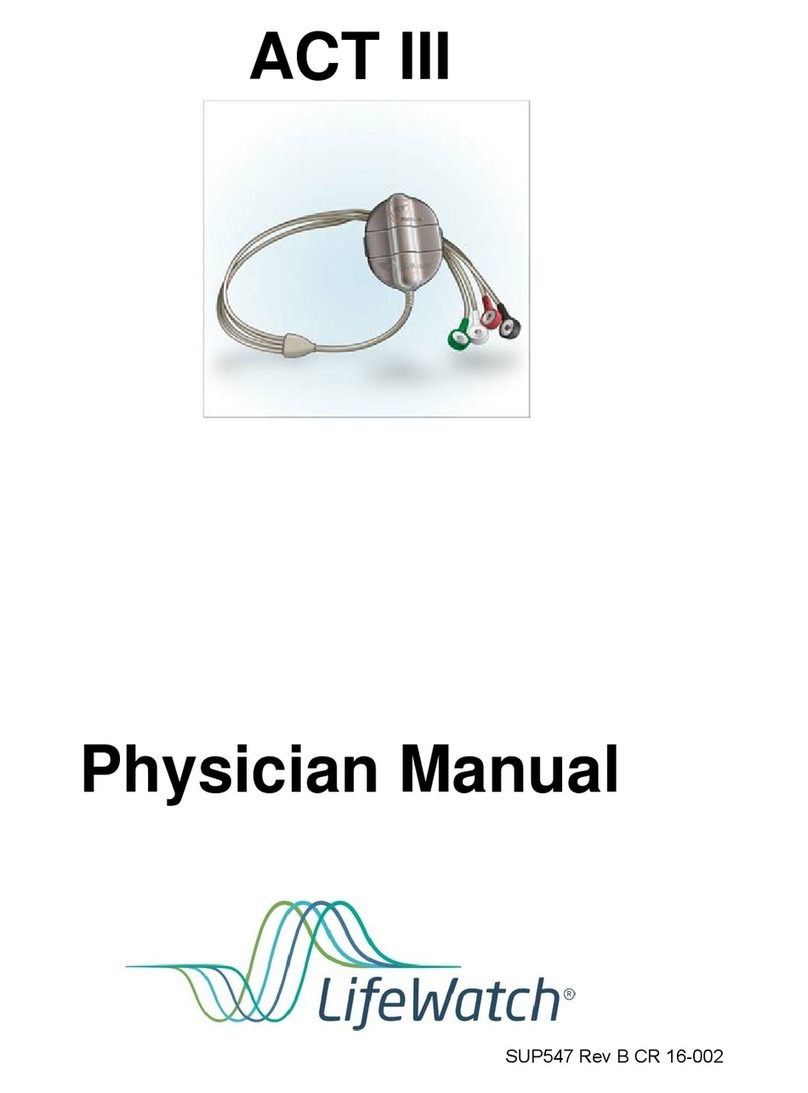Page 9
telephonically to a monitoring center. The monitoring center provides
the ECG data to the medical practitioner for evaluation.
The ACT monitoring system is intended to be prescribed for patients
who have demonstrated a need for cardiac monitoring and are at low
risk of developing life-threatening arrhythmias. Conditions where the
system should not be used include patients likely to experience
primary Ventricular Fibrillation or Ventricular Tachycardia and patients
who have other co-morbid cardiovascular conditions where an
arrhythmia could be potentially life threatening.
The ACT monitoring system is intended to be used in conjunction with
a monitoring service that reviews the recorded transmissions and
provides that information to the physician for his/her final diagnostic
interpretation. The monitoring system is not intended for use as an
emergency response system for patients who may experience life-
threatening arrhythmias.
The following list represents patient populations for whom use of the
ACT monitoring system is most appropriate. This list should be used
in conjunction with Medicare and other payor medical necessity
guidelines:
Patients with dizziness or lightheadedness
Patients with palpitations
Patients with syncope of unknown etiology
Patients who require monitoring for non-life-threatening
arrhythmias, such as Atrial Fibrillation, Supra-ventricular
Arrhythmias, evaluation of various Bradyarrhythmias. This
includes post-operative monitoring for these rhythms.
Patients recovering from coronary artery bypass graft (CABG)
surgery who require monitoring for arrhythmias
Patients requiring monitoring for arrhythmias-including co-morbid
conditions such as hyperthyroidism or chronic lung disease
Patients with obstructive sleep apnea to evaluate possible




























